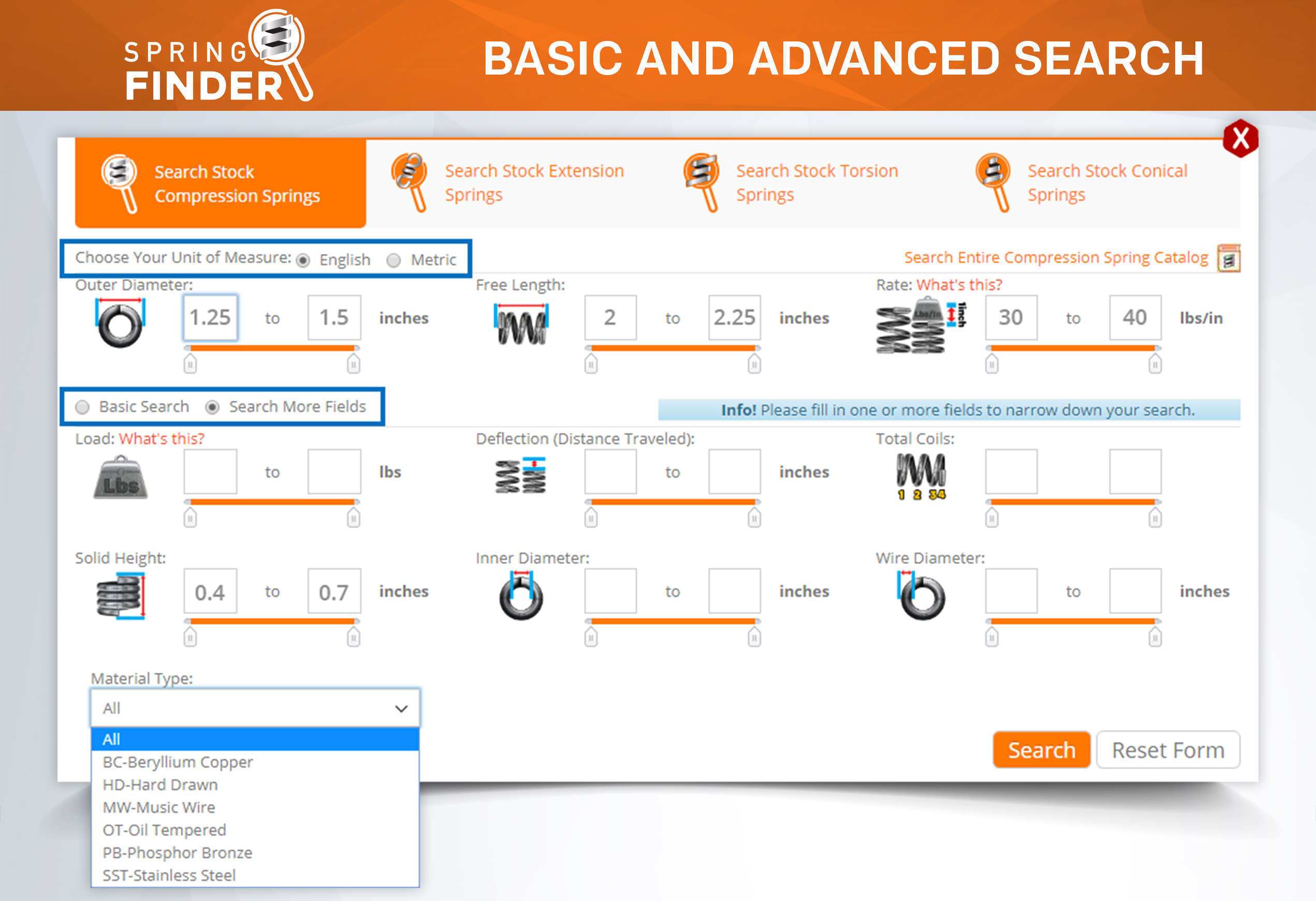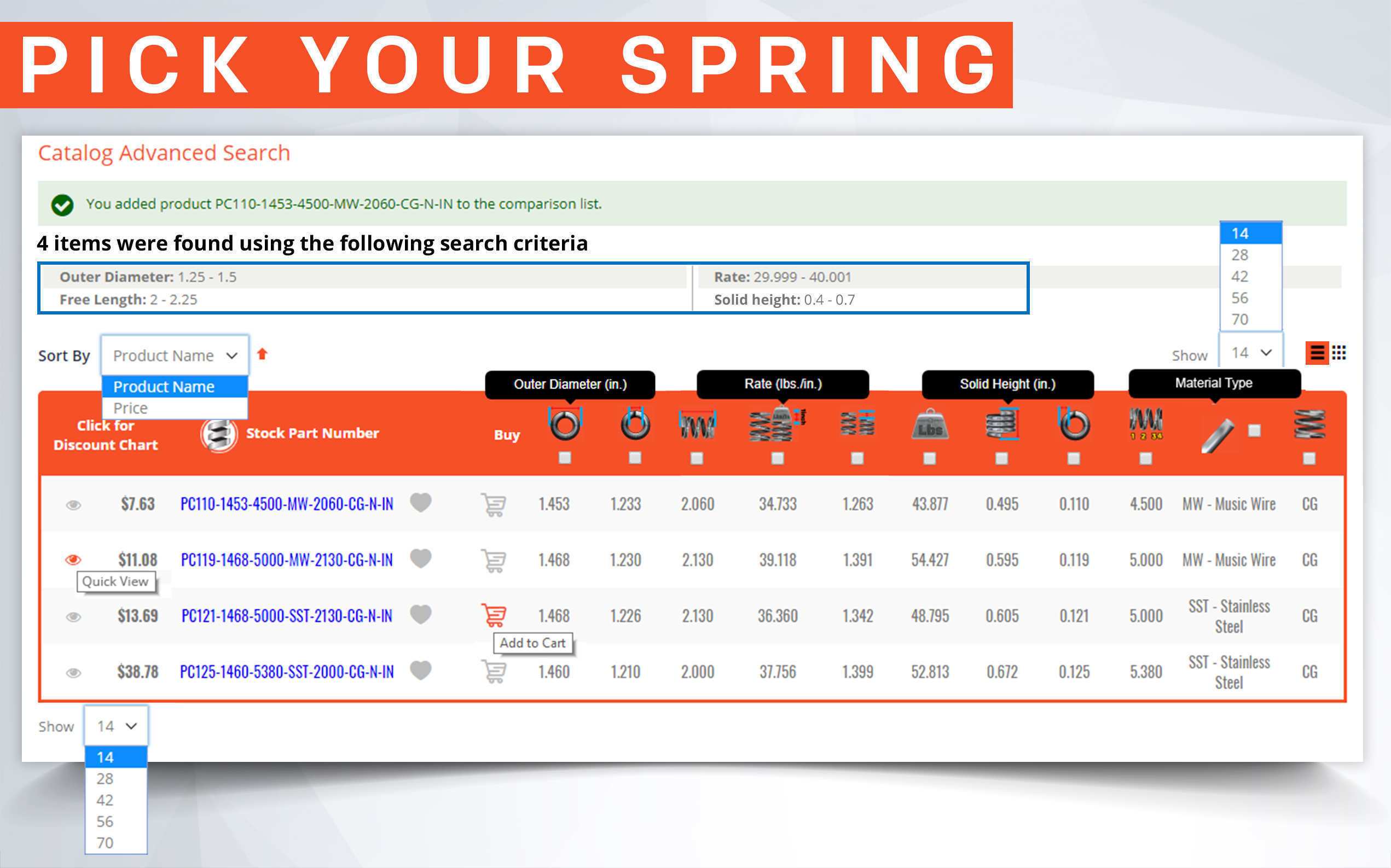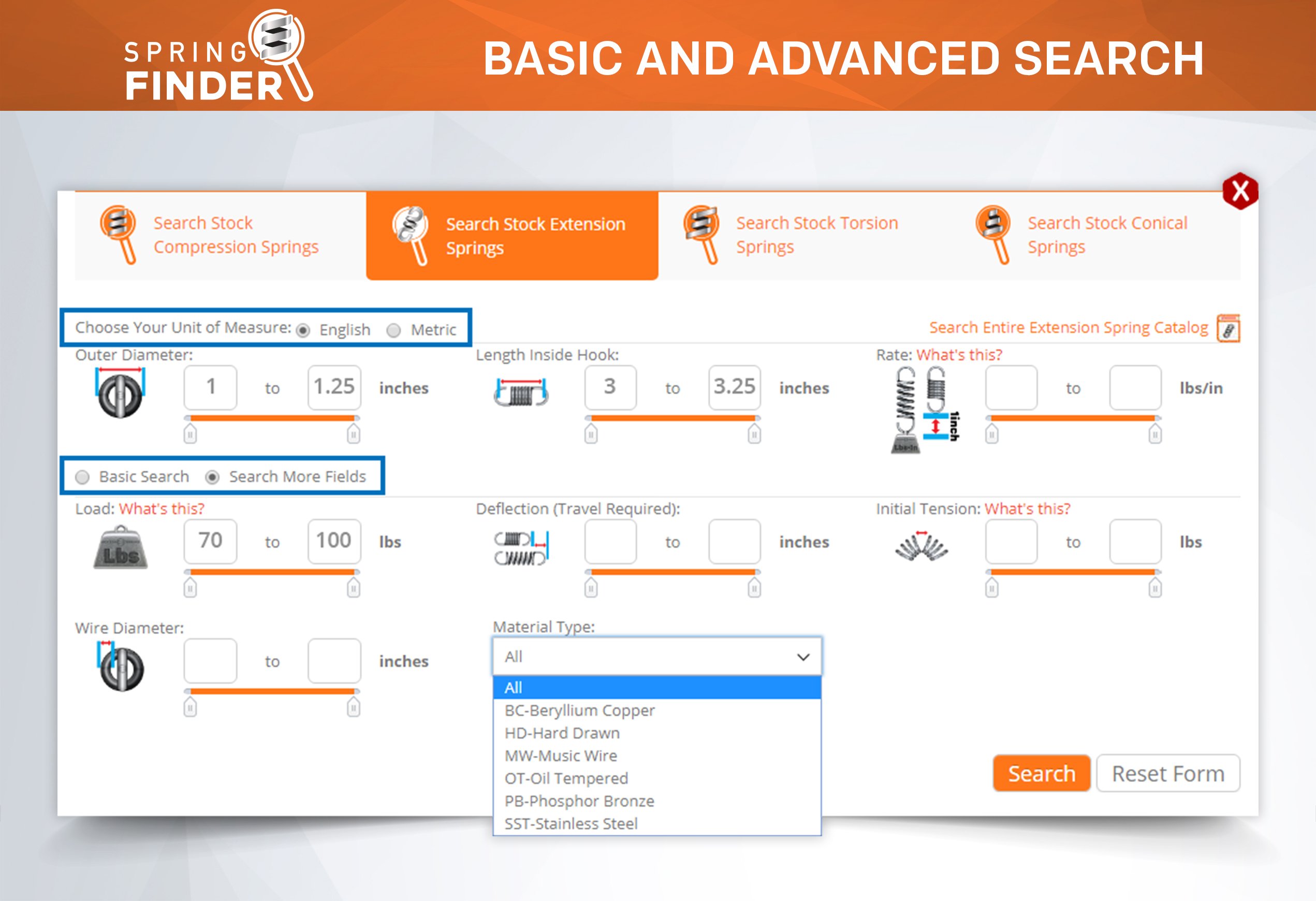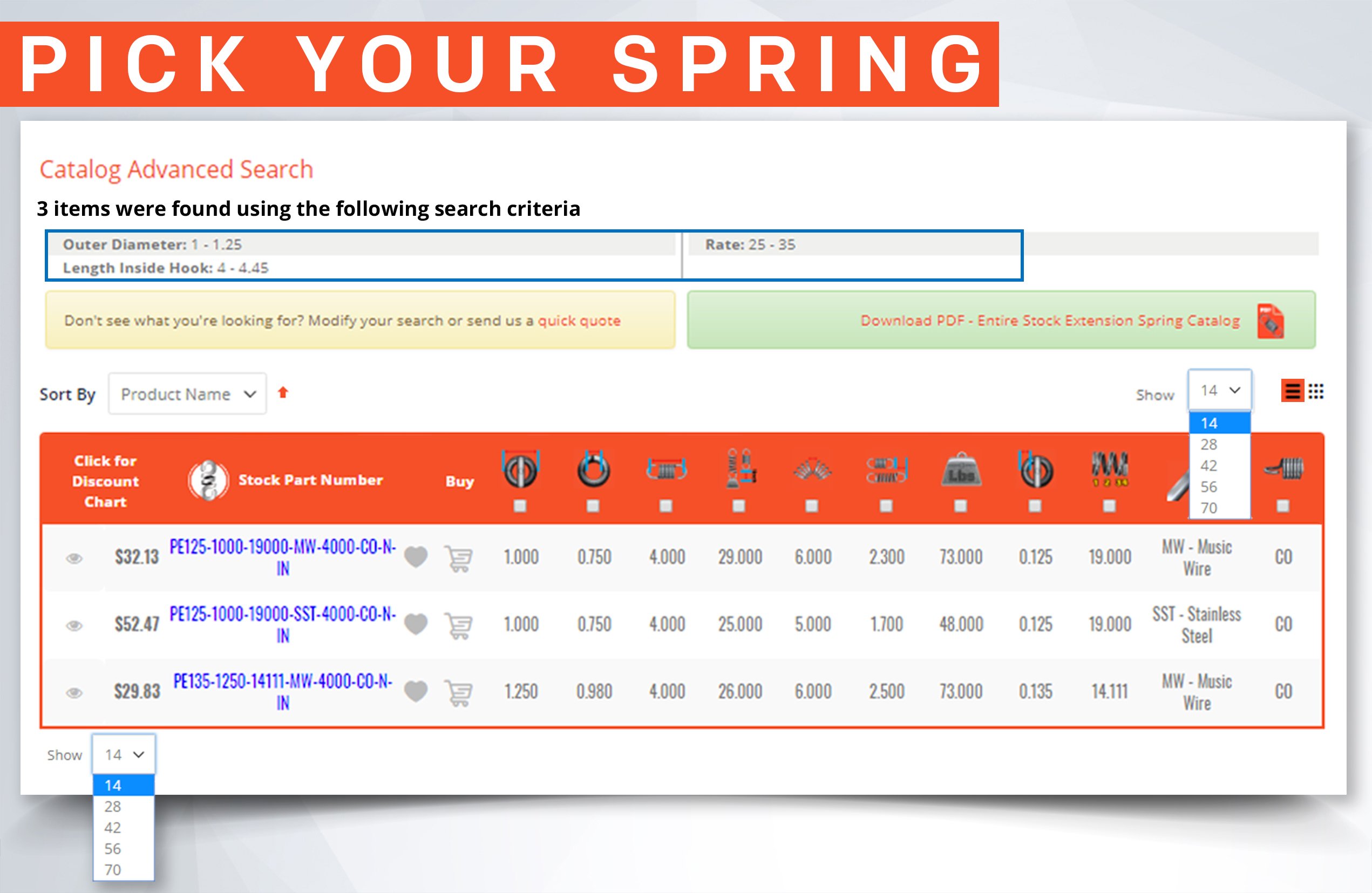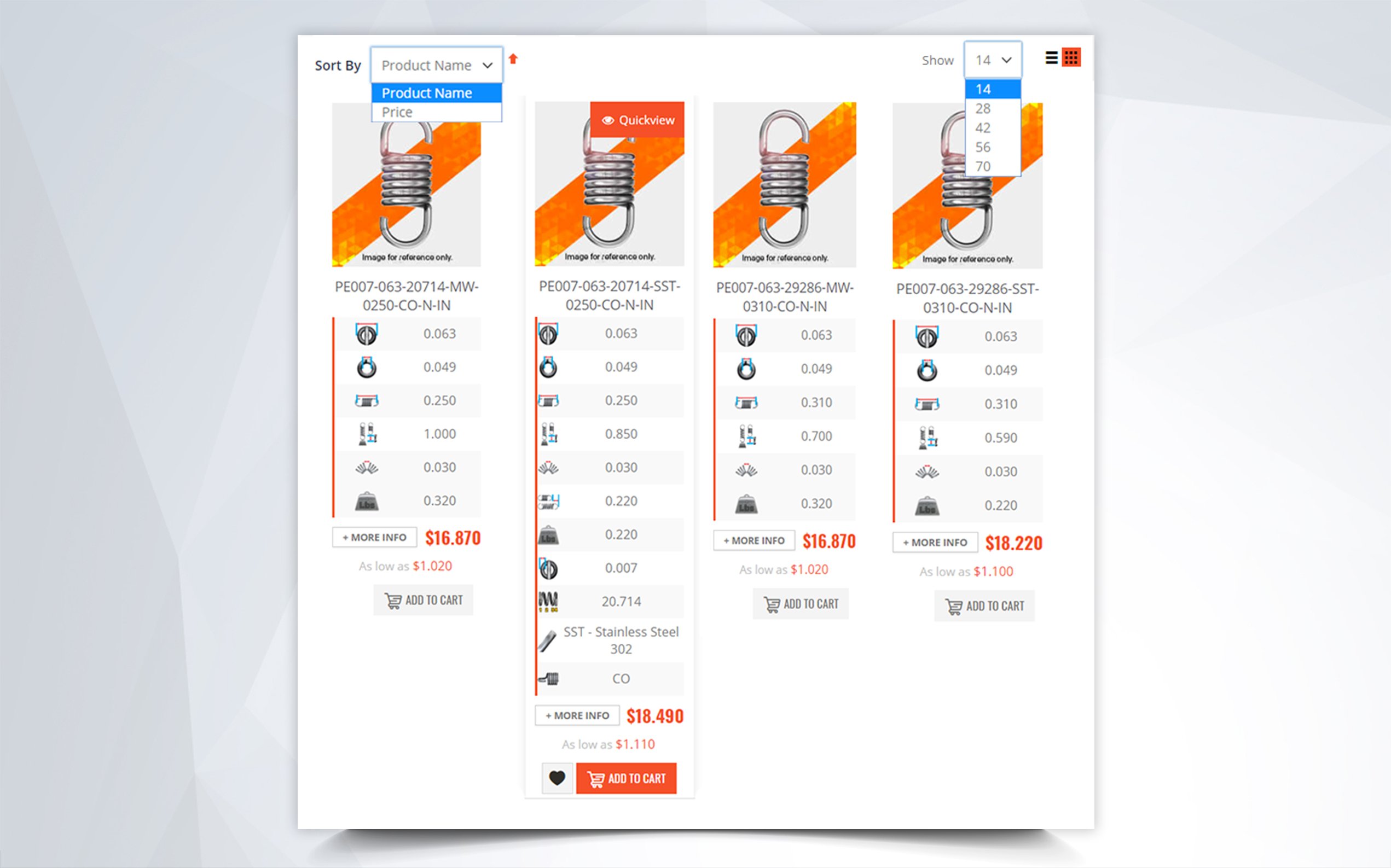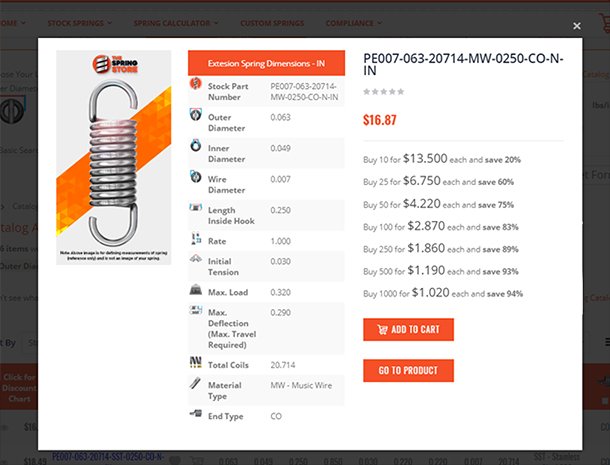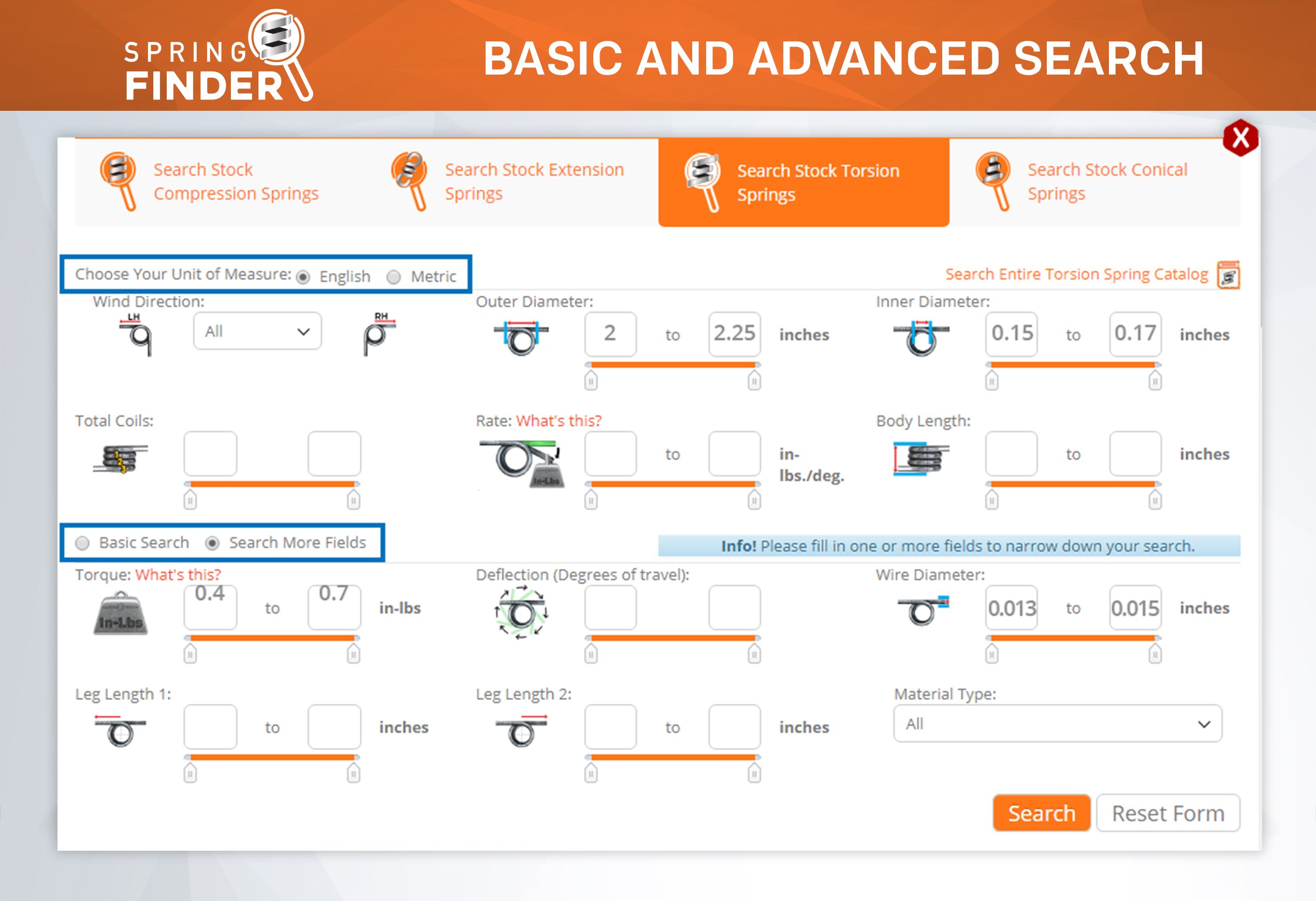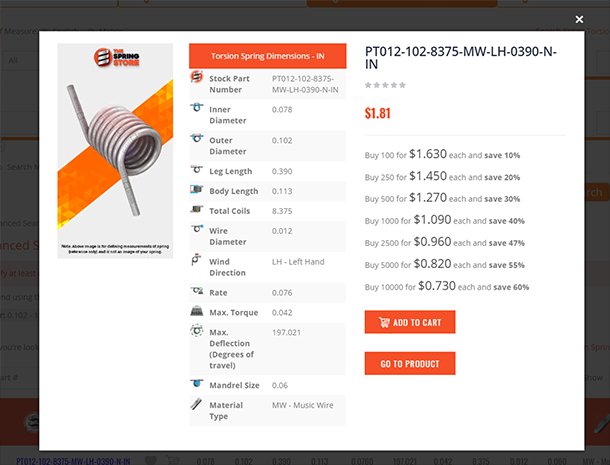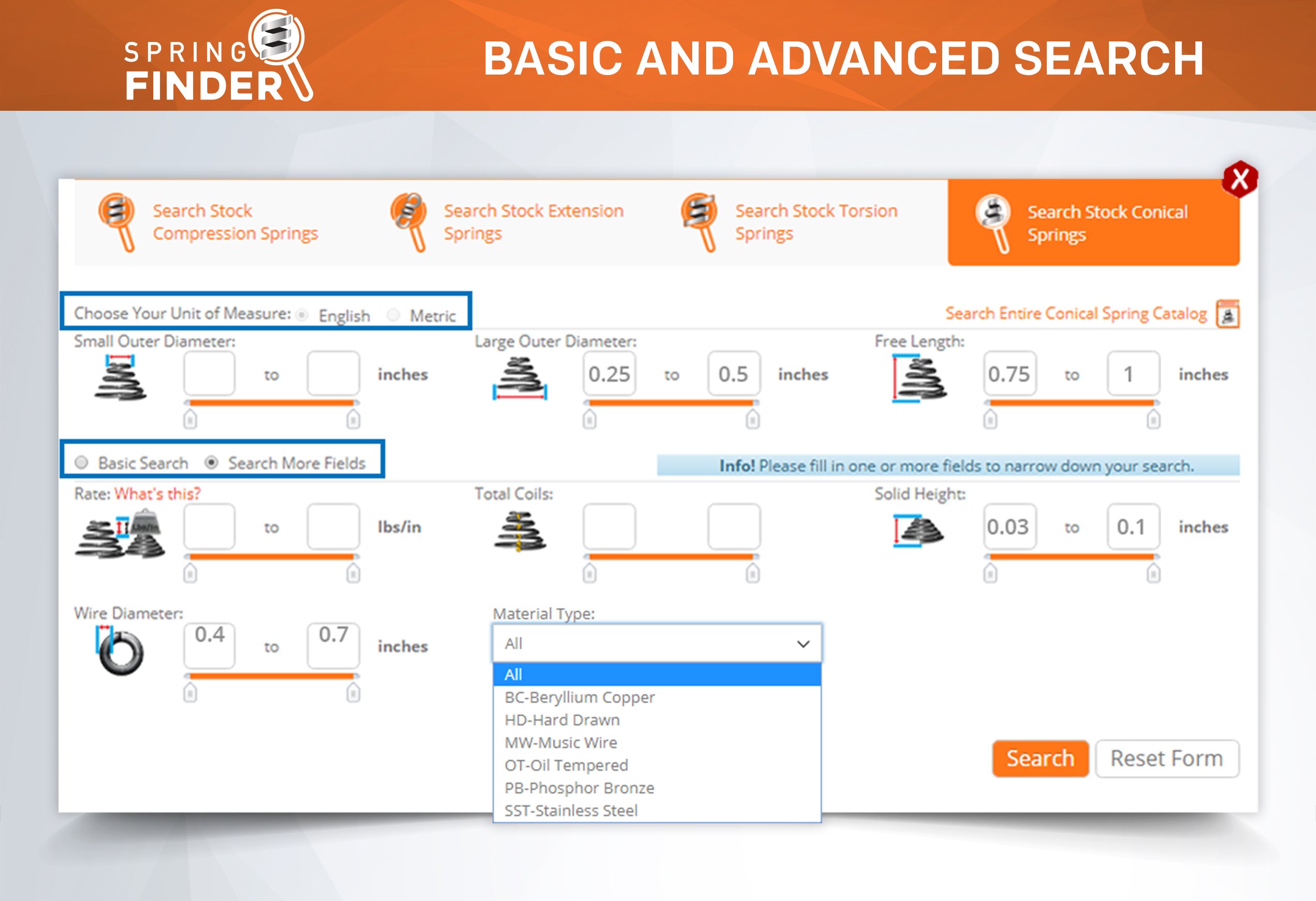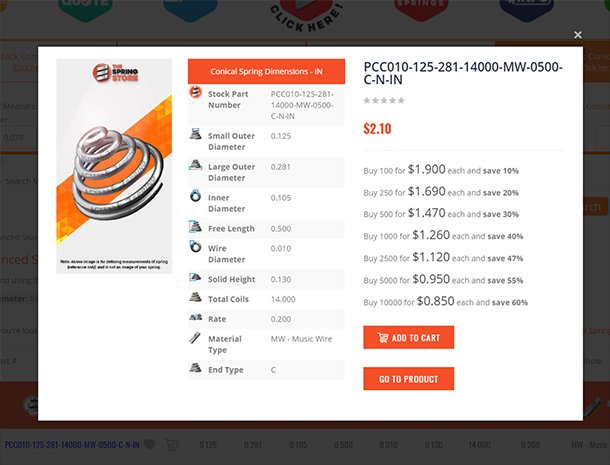Counting Coils
Sometimes, it is hard to define at which point one should start counting a spring’s coils. It is also difficult to determine which coils are active or inactive. Therefore, we have created this guide so that you can easily definite how many coils your spring has and how many of them are actually working towards your spring’s force and elasticity.
Active vs. Total Coils
Active coils are the coils which exert energy when a spring is compressed, extended, or torqued. All the coils in extension and torsion springs are active coils, however, this is not the case in most compression springs. In compression springs, active coils are the coils that have pitch in between (also known as open wound coils) and these deflect when a load is placed on the spring. Total coils are all the coils in a spring, including those without pitch (closed coils).
When it comes to compression springs with closed and ground ends, closed and squared ends, and double closed ends. The ends of these compression springs are close wound, which means there is no pitch in between them. These are purposely left without pitch so they can give the spring more stability and allow it to have more support if it needs to stand upright.
Compression Springs
Compression Springs require that you know the amount of total and active coils. A compression spring with closed and square ends or ground ends have 1 closed coils at each end. Those coils are inactive coils. This means that: if there are 10 total coils, you have to subtract 2 closed coils. Therefore, you have 8 active coils. For double closed ends, there are 2 closed coils on each end, so subtract 4 coils from the 10 total coils. This will give you a total of 6 active coils. In the case of compression springs with open ends, all coils are active because they all have pitch between them.
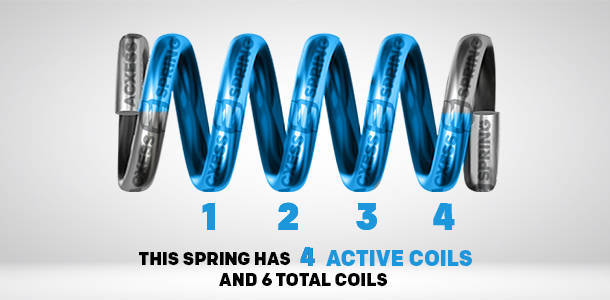
Extension Spring Active Coils
Extension spring’s coils are all active. To determine the number of active coils in an extension spring, you divide the body length (length of spring without the hooks), by the wire diameter, and subtract one coil. If you happen to have an extension spring with a 2.275” inch body length and a 0.025 wire diameter, divide 2.275 by 0.025 and subtract 1. This will give you a total of 90 active coils.
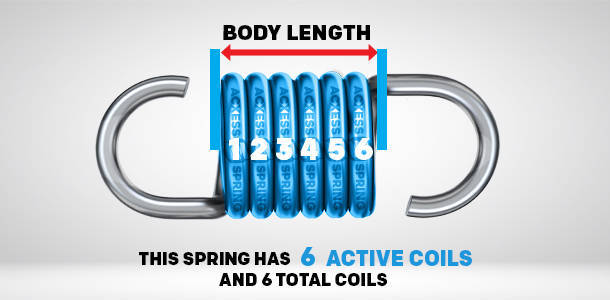
Torsion Springs
Like extension springs, a torsion spring’s coils are all active. Keep in mind that, with torsion springs, there will usually be a fraction of a coil more or a fraction of a coil less. Why? Because the angle of the free position of your spring is determined based on that last partial coil. If the coils were to be whole numbers, the legs would always make a straight line at the top of your spring’s OD, thus having a 0º free position.
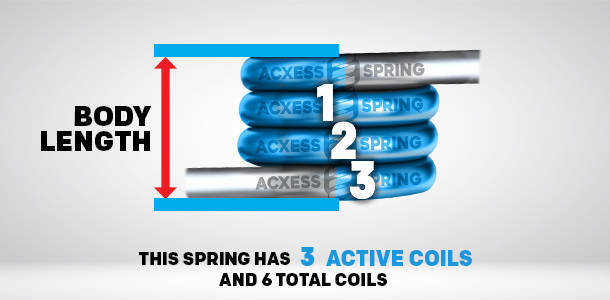
Understanding the differences between active coils and total coils in each type of spring can help you purchase the right spring for the job. If you need further assistance or help buying a compression, extension, or torsion spring, contact us today at (951) 276-2777.






